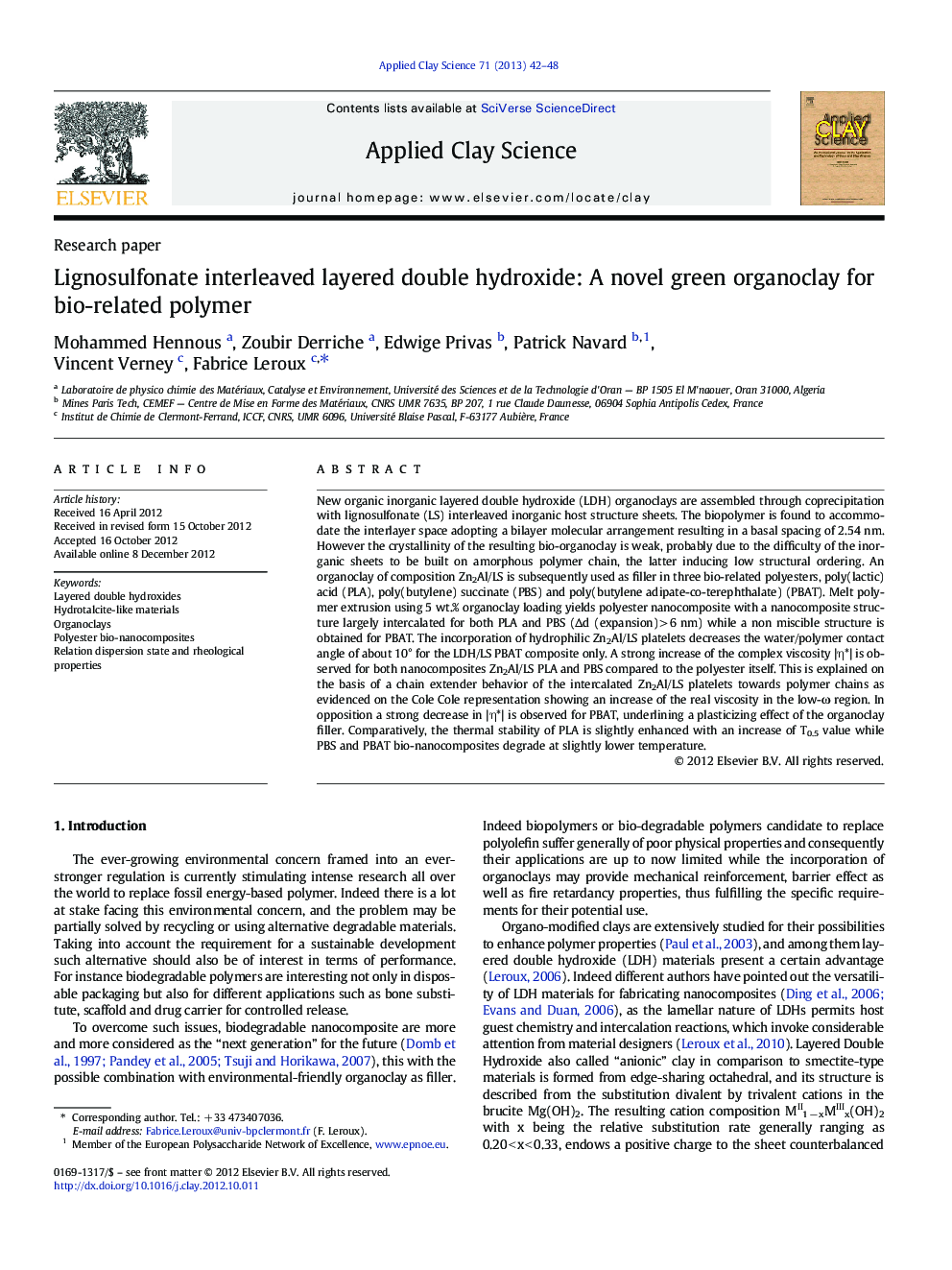| Article ID | Journal | Published Year | Pages | File Type |
|---|---|---|---|---|
| 1695145 | Applied Clay Science | 2013 | 7 Pages |
New organic inorganic layered double hydroxide (LDH) organoclays are assembled through coprecipitation with lignosulfonate (LS) interleaved inorganic host structure sheets. The biopolymer is found to accommodate the interlayer space adopting a bilayer molecular arrangement resulting in a basal spacing of 2.54 nm. However the crystallinity of the resulting bio-organoclay is weak, probably due to the difficulty of the inorganic sheets to be built on amorphous polymer chain, the latter inducing low structural ordering. An organoclay of composition Zn2Al/LS is subsequently used as filler in three bio-related polyesters, poly(lactic) acid (PLA), poly(butylene) succinate (PBS) and poly(butylene adipate-co-terephthalate) (PBAT). Melt polymer extrusion using 5 wt.% organoclay loading yields polyester nanocomposite with a nanocomposite structure largely intercalated for both PLA and PBS (Δd (expansion) > 6 nm) while a non miscible structure is obtained for PBAT. The incorporation of hydrophilic Zn2Al/LS platelets decreases the water/polymer contact angle of about 10° for the LDH/LS PBAT composite only. A strong increase of the complex viscosity |η*| is observed for both nanocomposites Zn2Al/LS PLA and PBS compared to the polyester itself. This is explained on the basis of a chain extender behavior of the intercalated Zn2Al/LS platelets towards polymer chains as evidenced on the Cole Cole representation showing an increase of the real viscosity in the low-ω region. In opposition a strong decrease in |η*| is observed for PBAT, underlining a plasticizing effect of the organoclay filler. Comparatively, the thermal stability of PLA is slightly enhanced with an increase of T0.5 value while PBS and PBAT bio-nanocomposites degrade at slightly lower temperature.
Graphical abstractFigure optionsDownload full-size imageDownload as PowerPoint slideHighlights► New bio hybrid assembly between lignosulfonate and layered double hydroxide sheet. ► Organoclay as green filler for bio-degradable polyester using melt extrusion. ► Rheology to understand the platelets dispersion vs. the polyester chain relaxation.
